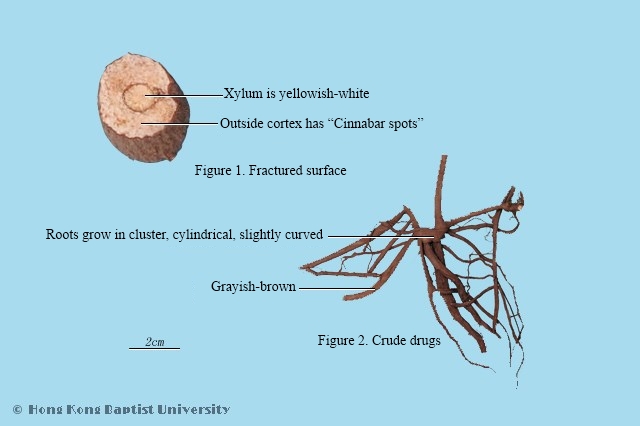Production RegionsPrimarily produced in the Chinese provinces of Guangdong, Guangxi, Jiangxi, Zhejiang.
Macroscopic FeaturesRoots grow in a cluster on a slightly enlarged rhizome, cylindrical, slightly curved, 5~25cm long, 2~10mm diameter. Externally brown or grayish-brown, with numerous longitudinal wrinkles and horizontal or ringed fractured scars, cortex and xylem are easily split apart. Hard and brittle texture, easily broken, fractured surface is uneven, cortex is thick and occupies about half of the fractured surface, off-white or pale purplish-red, xylem is pale yellow. faint odor, slightly bitter, acrid taste, numbing to the tongue.
Quality RequirementsSuperior medicinal material has thick strip, thick skin.
PropertiesBitter, acrid, neutral
FunctionsMoves blood, dispels wind, resolves toxin, eliminates swelling. Apply to upper respiratory tract infection, throat swelling pain, diphtheria, tonsillitis, bronchitis, rheumatic arthritis, waist and leg pain, injury from falls, erysipelas, lymphadenitis, externally use to traumatic injury, fracture, poison snake bites.
Technical Terms'Cinnabar spots’: This refers to scattered spots with a red color like cinnabar that are scattered on the evenly cut surface of the medicinal material. It is primarily related to oil ducts and secretions.
OriginThe dried root of Ardisia crenata Sims.(Myrsinaceae)
